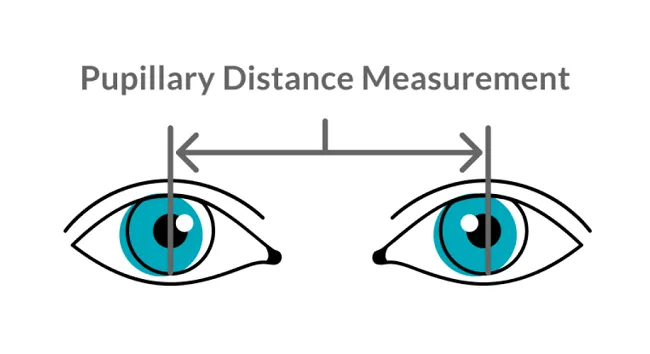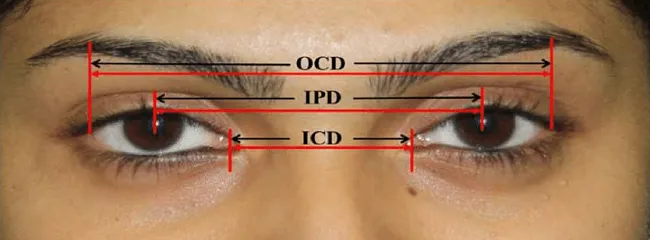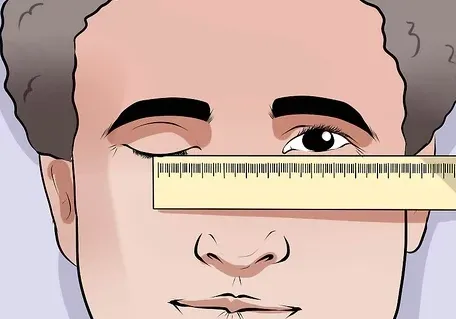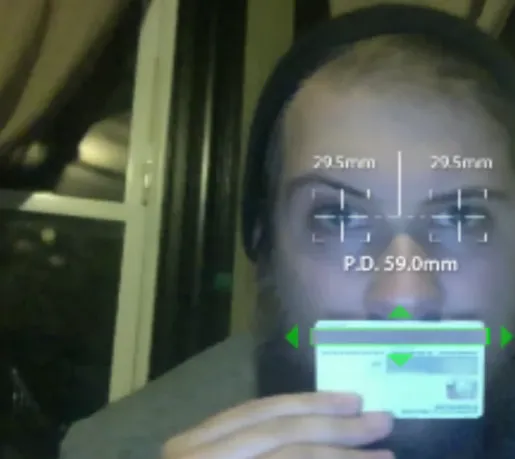Do you want to learn how to find Interpupillary Distance? Then you’ve landed on the correct page. In this digital era, as the users of VR headsets for PC and mobile are increasing, so is the number of manufacturers.
In order for VR headsets to provide an optimal and comfortable viewing experience, it is important that the lens separation, known as inter-pupillary distance or IPD, matches the user’s physiology.
The IPD is the measure of how far apart a person’s pupils are. This distance varies between individuals and measuring it accurately is crucial for several visual devices like glasses, Steam VR headsets, and more.
In this blog, we explain the IPD measurement procedure in simple steps that can be easily followed at home without any special equipment. We discuss what IPD is, why it is important, and how you can determine your personal IPD distance.
What is Interpupillary Distance?
The interpupillary distance, also called IPD, refers to the measure of how far apart a person’s two pupils are from each other. It is measured in millimeters, from the center of one pupil to the other. The average adult male IPD is around 65 mm, while for females it is about 63 mm.

The IPD helps define the depth perception and ability of the eyes to coordinate with each other. It also determines the size of the binocular viewing region. About 95% of the population has an IPD within the range of 58-72 mm. However, around 5% fall outside of this standard distribution.
An accurate IPD measurement is important for several visual devices that are positioned close to the eyes, like VR headsets, 3D viewers, binoculars, and diagnostic eye equipment. Getting the IPD right helps minimize visual issues like eyestrain, double vision, or a distorted sense of depth.
IPD Measurement Procedure – Can You Do It Yourself?
It is absolutely possible for individuals to measure IPD for Quest 3 games themselves without needing to visit an optometrist. In fact, many optometrists simply use one of the basic at-home self-measurement methods themselves during an exam.
One of the most common techniques involves using a ruler or mirror. To do it, hold the ruler at arms length in front of your face. Without straining or squinting, line up the edges of your pupils with the ruler’s edges or markers as seen in the mirror’s reflection.
The number on the ruler where the pupil’s edges line up is your IPD in millimeters. This approach yields results that are typically within 1-2mm of accuracy for about 80% of people.

Others find success using a sticky note, with the edges lined up at the pupils, then measuring that distance. If readings differ by more than 2mm, averaging the results provides a good estimated IPD.
While not as precise as an optometrist’s tools, these approaches allow 95% of users to determine their IPD within a margin of error of 3mm or less for proper device fitment.
- Also Read About: Meta Quest 4 Release Date
How to Find Interpupillary Distance at Home – 4 Methods
There are several convenient methods to self-measure your IPD with items commonly found at home or on your mobile device.
Precisely knowing this visual parameter will help optimize different optical devices with optimal eye relief and field of view based on your individual needs. In this section we explore 4 such practical approaches:
1. Using a Ruler
So, the first method for IPD measurement is by using a ruler. This method is pretty straightforward and works for everyone just the same around the world. Follow the steps mentioned below to learn how to measure IPD with ruler.

- Place the ruler at eye level and look at your eyes’ reflection in the mirror.
- Align the white markings between your pupils’ centers as shown.
- Note the number on the ruler where the marking sits between your two pupils.
2. IPD measurement Online Using an iPhone or Android App
Many apps use automated photographic methods for IPD determination. If you don’t know how to find interpupillary distance manually then you can take help of these apps to get the things done. They guide users through calibration steps utilizing the camera for analysis.
Measurements are often within 1-3mm of professional evaluation. You can use the apps listed below if you want to know how to measure IPD on iPhone and Android devices.
- EyeMeasure 17+
- GlassesOn | Pupils & Lenses
- Pupillary Distance Measure
- Opthy
- PDCheck AR
- Optometry Eye Distance Measure
3. Estimating Your IPD in a Mirror
If you don’t know how to measure IPD for distance and near yourself then you can use a mirror. The ruler method listed above can be combined with a mirror to get things done.
Don’t worry if you don’t have a ruler because you can use almost anything like a credit card, a piece of cloth or even a simple paper and pen/pencil to get it done.

- Stand 12 inches from the mirror.
- Hold a credit card at eye level.
- Position the edge lines between your pupils’ reflections in the mirror.
- Measure the card width for your estimated IPD distance.
4. Ask Your Eye Doctor
Sometimes you might not be able to utilize neither IPD measurement app Android and iPhone nor the mirror method. We get you. Don’t worry because the best way to alculate interpupillary distance is by visiting an eye doctor.
Optometrists leverage specialized tools for precise monocular and binocular IPD. Their trained analysis using digital lenses helps establish a baseline accuracy. This method is best for diagnostic considerations or prescriptions needs.
Monocular vs. Binocular IPD: What’s the Difference?
When setting up devices like VR headsets, it is important to understand the difference between monocular and binocular IPD measurements. Monocular IPD measures the distance between the center of each pupil to the center of the face.
This is relevant for situations like scopes and diagnostic lenses positioned very close to one eye. Binocular IPD, on the other hand, refers to the spacing between the center of the left pupil to the center of the right pupil.

It is the most meaningful measurement for devices meant to be used and viewed binocularly, simultaneously with both eyes, like VR headsets for iPhone, glasses or microscopes. Generally, monocular IPD will read around 1-2mm smaller than binocular IPD for most people.
Knowing how to find interpupillary distance of both types allows finding the right configuration for both binocular and independent eye-positioning needs. Professionally measured prescriptions usually provide both metrics for complete visual setup suitability.
Common Mistakes to Avoid When Measuring Your IPD
It is always better to be aware of potential errors while measuring your interpupillary distance at home without professional tools.
Your IPD measurement is crucial to ensure visual comfort and suitable performance of devices like VR headsets for kids, glasses and more. Here are some key mistakes to keep in mind so you can determine your accurate IPD distance.
- Squinting or straining your eyes during measurement.
- Failing to position the measurement tool evenly between your pupils.
- Measuring at an angle instead of directly face-on.
- Not standing the right distance from the mirror.
- Not accounting for magnification from a mirror or screen.
- Not keeping your head still and moving during measurement.
- Taking measurements in low or uneven lighting conditions.
- Not averaging results from multiple measurement methods.
- Relying on only one DIY method instead of mixing techniques.
- Not re-measuring over time as your IPD could slightly change.
Final Words
Knowing your interpupillary distance is vital for optimizing many visual devices and ensuring proper binocular vision. Whether you’re using VR headsets, reading glasses or other eyewear, your IPD helps determine what lenses to use for clear, distortion-free viewing.
This article has outlined how to find interpupillary distance accurately IPD at home. Be sure to try multiple methods and average the results for highest precision. And do visit our blog regularly for more visual technology and eye care tips.
Accurately monitoring your IPD over time is an important aspect of yourself and your vision. If you know how to measure IPD at home for PC gaming VR headsets, then do share your views on the method with us via the comments below.






